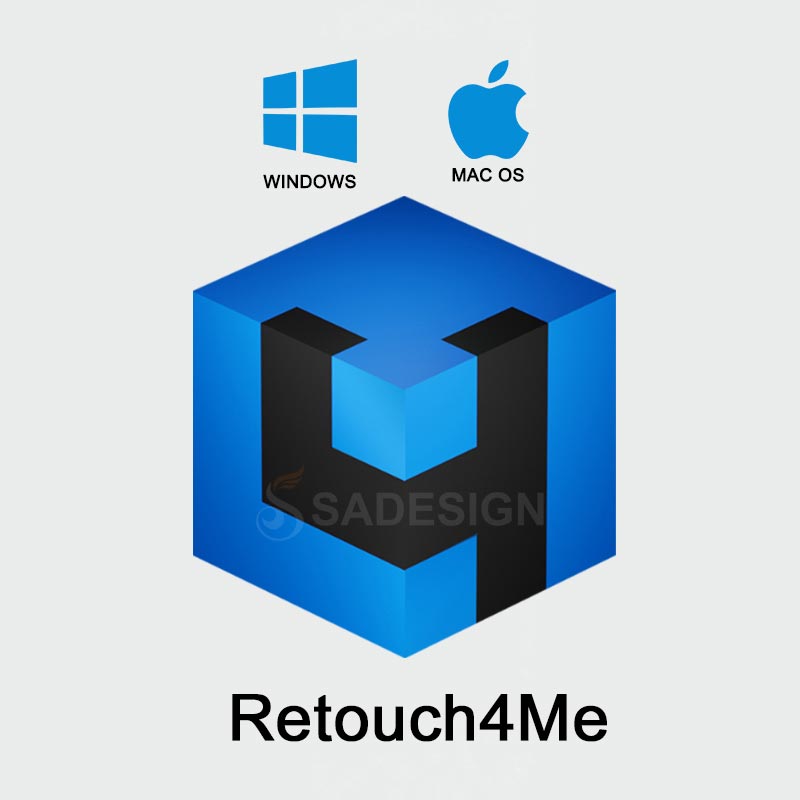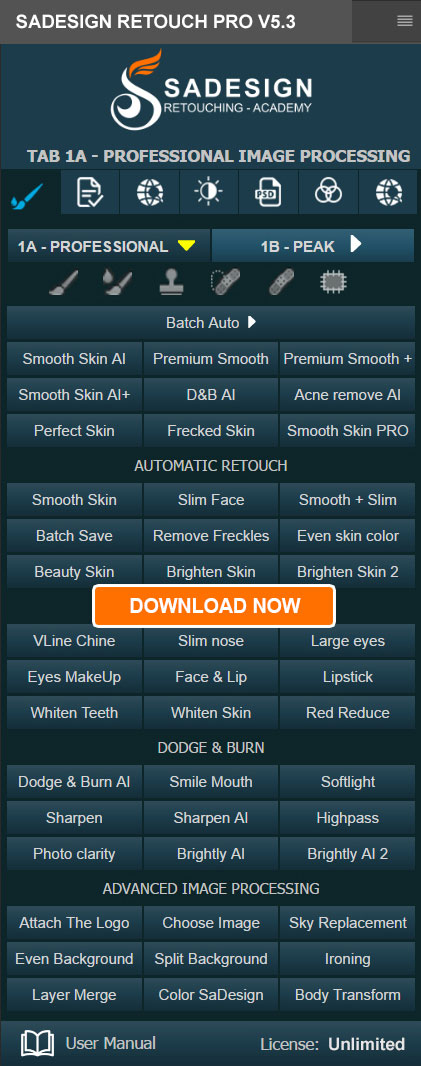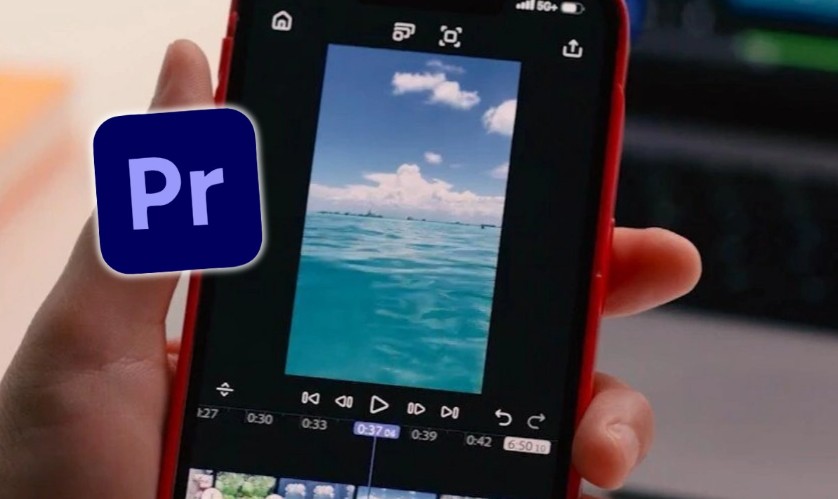Best Selling Products
intype Photography: The Art of Photography from the 19th Century
Nội dung
Looking back at the history of photography, the Tintype appears as a major turning point. In the mid-19th century, when photography was still in its infancy, many techniques such as the daguerreotype and ambrotype were born.
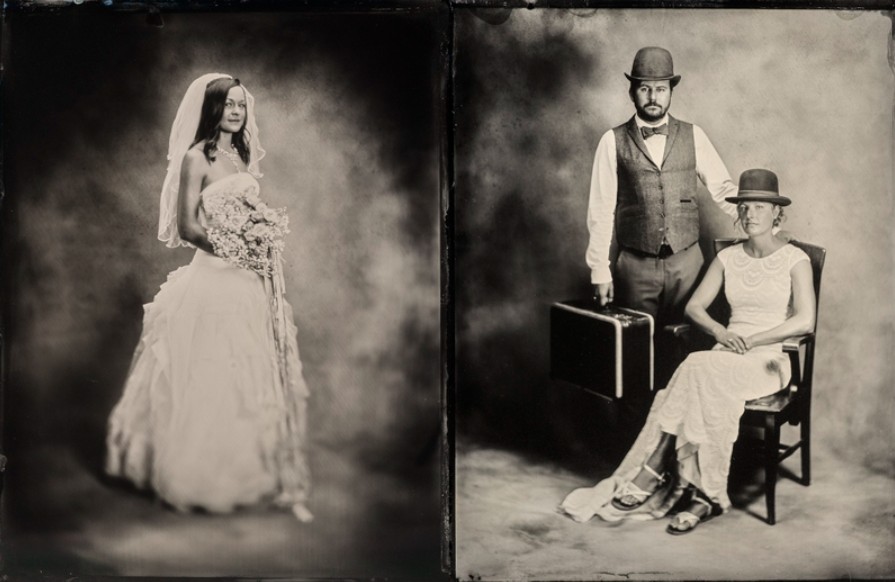
In the world of photography, there are techniques that have been around for centuries but still maintain their vitality and lasting appeal thanks to their unique and distinctive beauty. Tintype is a typical example. Appearing in the mid-19th century, this photographic technique has made its mark in history as one of the most popular methods of recording images during the American Civil War. Tintype photographs are not simply products of the photographic technology of that time, but also a living testament to a turbulent period in history, while also containing a nostalgic beauty that anyone who admires them will find it hard to take their eyes off.
Although it was once replaced by more modern photographic techniques, Tintype still holds a special place in the hearts of art lovers. Today, Tintype is not only recreated by professional photographers, but also becomes a source of inspiration for visual art enthusiasts who want to find rustic, simple but profound. This article will explore with you the history, beauty, process of creating Tintype photos and how to recreate or simulate this style in the digital age.
1. The nostalgic beauty of Tintype photos
Tintype, also known as melainotype or ferrotype, is a photographic technique that creates an image directly on a thin metal plate. The metal plate is usually coated with a dark lacquer or enamel, giving it a unique and different appearance than regular photographs on paper or glass. This makes Tintype a very handmade art form, evoking a sense of antiquity and mystery.
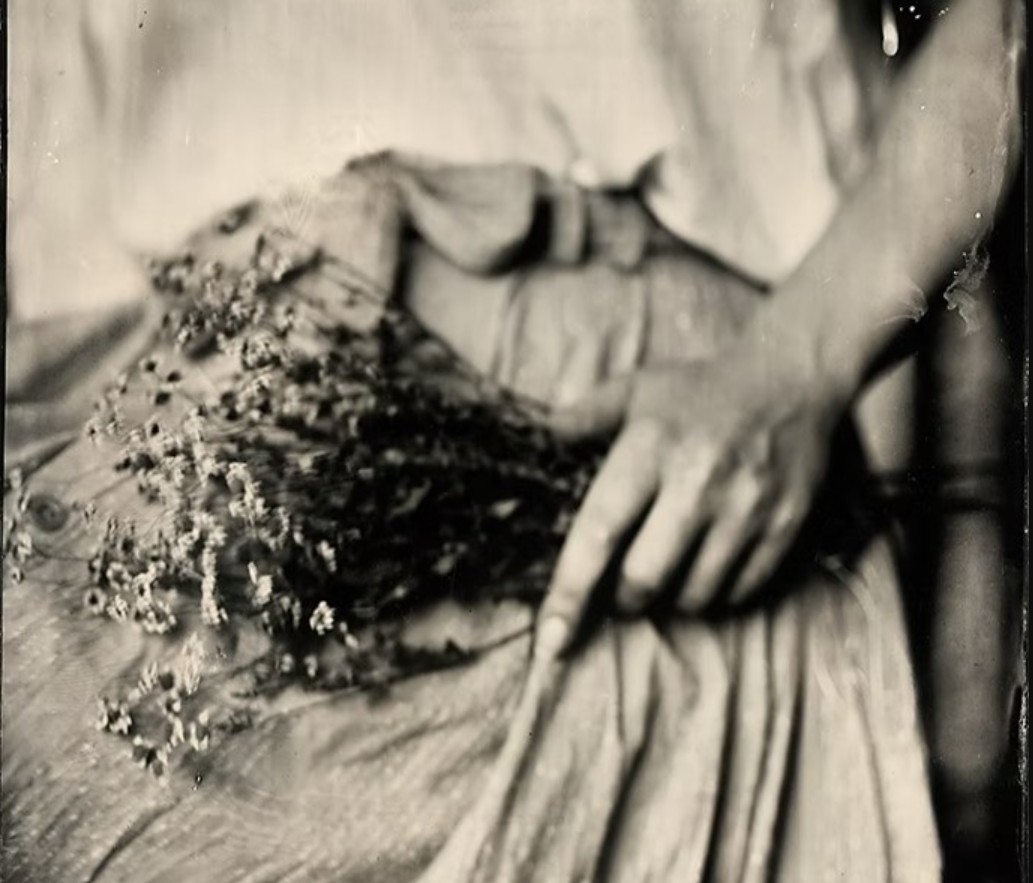
The process of creating a Tintype photograph is not simple. First, the artist must prepare the metal surface by coating it with a special chemical. The metal plate is then placed in a camera to expose the subject to the light. When the photograph is processed with chemical solutions, an underexposed negative image is created. The unique thing is that when this negative image is placed on a dark background, the transparent parts become black, creating the effect of a complete positive image.
Each Tintype photograph therefore bears a distinct personal stamp. No two photographs are exactly alike, as the manual process and the interaction of factors such as light, chemicals and exposure time always create distinct variations. This gives Tintype a special appeal: it is both vivid and realistic, yet also has a mystique that is not easily found in modern photographic techniques.
2. History of Tintype images
If we look back at the history of photography, the appearance of Tintype was an important turning point. In the mid-19th century, when photography technology was still in its infancy, many techniques such as daguerreotype and ambrotype were born. However, these methods were expensive and difficult for the majority to access. Tintype appeared as an alternative solution that was both cheap and convenient, opening up opportunities for photography to many social classes.
What made Tintypes popular was their portability and low cost. Instead of using glass like ambrotypes or silver surfaces like daguerreotypes, Tintypes used metal plates coated with black paint, which significantly reduced costs. The American Civil War was the period when Tintypes reached their peak. Portraits of soldiers taken and sent home to their families not only had great sentimental value but also showed the widespread power of this technique.
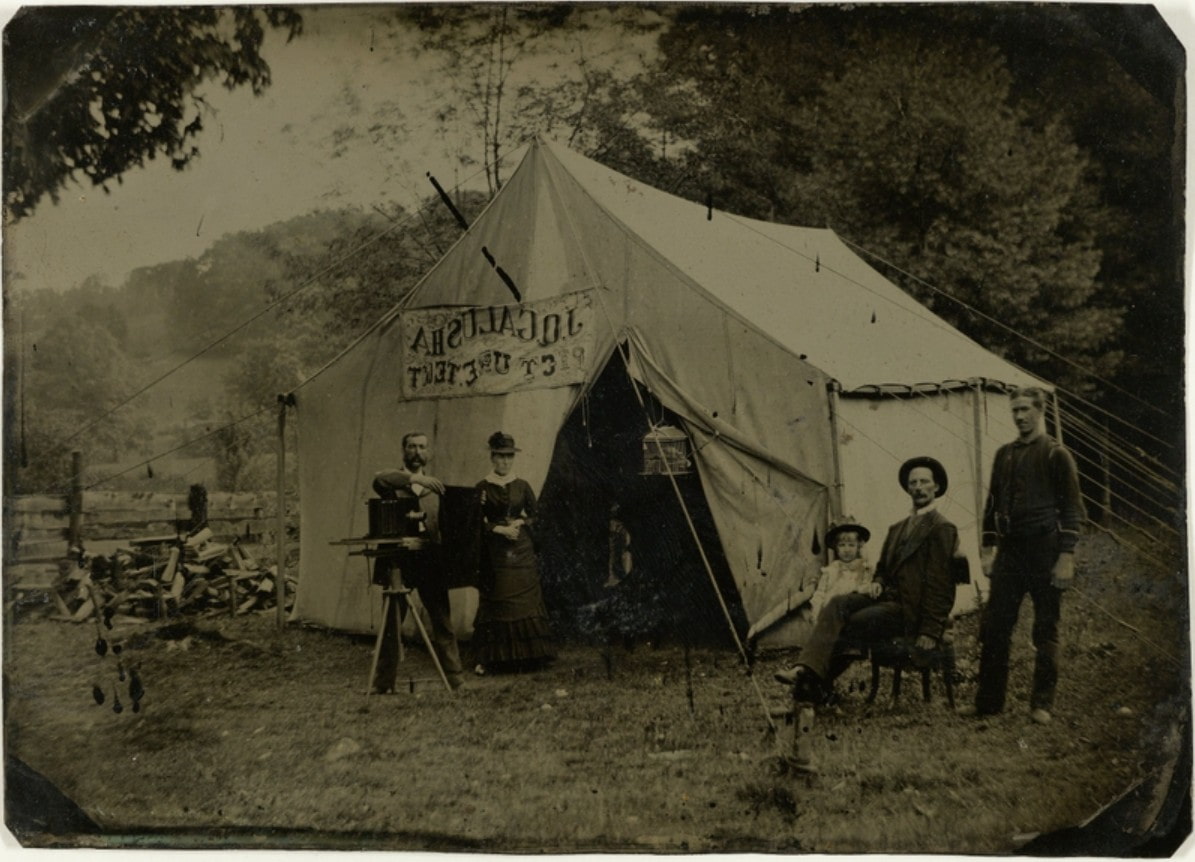
From the mid-19th century to the early 20th century, Tintype remained a staple of portrait photography, especially in fairs, street events, and small studios. Although it was later replaced by film and modern printing techniques, Tintype did not disappear completely. Contemporary photographers continue to rediscover the medium as a nostalgic medium while also providing timeless artistic value.
Today, Tintype is not only treasured by collectors, but also creatively applied in visual arts, fashion photography and retro portraiture. It has become a cultural icon, a testament to the enduring vitality of traditional values in the digital age.
3. Things needed to create Tintype images
Creating a Tintype requires not only patience, but also the right equipment, chemicals, and working environment. Tintypes come in two common forms: wet-plate collodion and dry-plate.
Wet-plate collodion is a traditional process in which collodion emulsion is applied directly to a metal plate just before exposure. This method produces a unique, richly detailed image effect but requires the photographer to work quickly in a darkroom or portable studio. In contrast, dry-plate is a modern improvement that uses a gelatin emulsion that can be prepared in advance, making it easier to work with and more suitable for beginners.
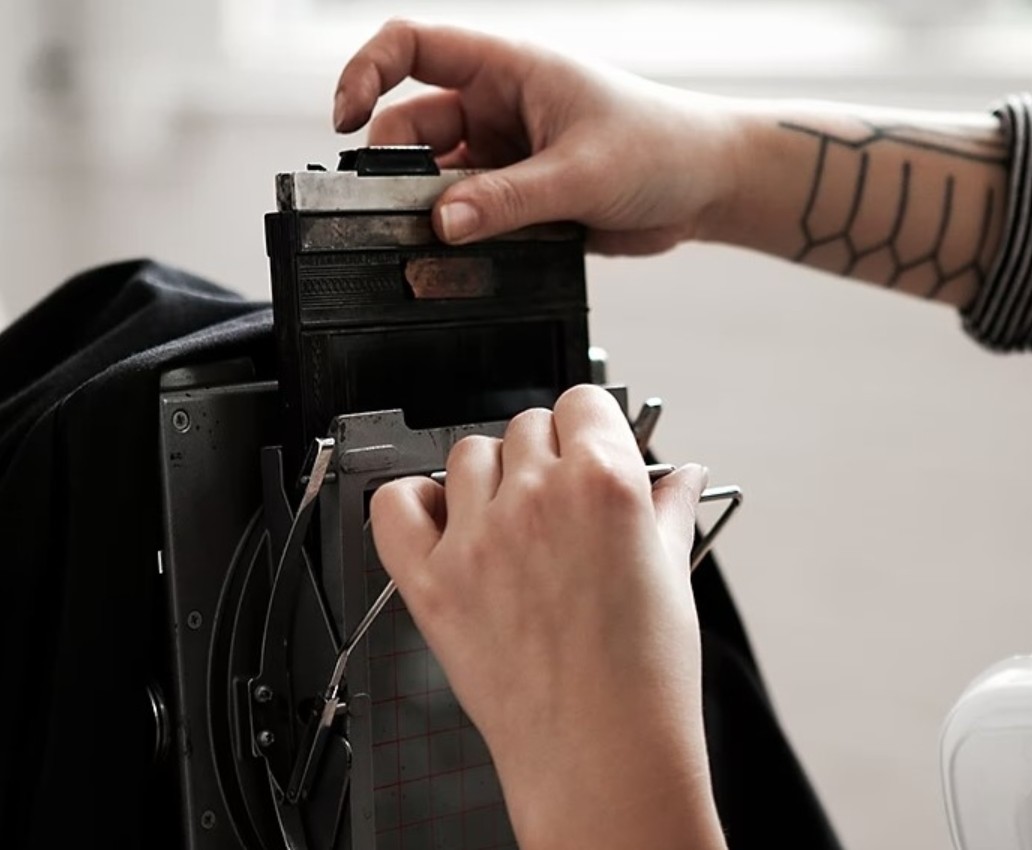
In terms of equipment, Tintype photographers often need to use large format cameras, sturdy tripods, and specialized film holders. Chemicals are key, including collodion, silver nitrate, photographic developer, fixative, and gloss coating. In addition, environmental conditions, especially darkroom temperature, need to be maintained at a stable level of about 20 degrees Celsius to ensure image quality.
The initial costs of getting started with Tintype are not small. A basic kit, including darkroom equipment, chemicals, and safety accessories, can range from $2,000 to $5,000. For beginners, basic kits will save money and simplify the process. However, to achieve the sophistication and uniqueness of each image, a serious investment is necessary.
4. How to create a Tintype photo
4.1. Prepare the base plate
The first step in the wet-plate collodion process is to prepare the plate. The photographer removes the plastic coating from the metal plate, cleans the surface, and then pours collodion solution to create a light-sensitive coating. The plate is then dipped in a silver nitrate solution, which increases its light-capturing ability.
This process, which usually takes place in a darkroom, requires extreme care. A small mistake can render the image unusable. This is also why Tintype is considered a craft, requiring meticulousness and high concentration.
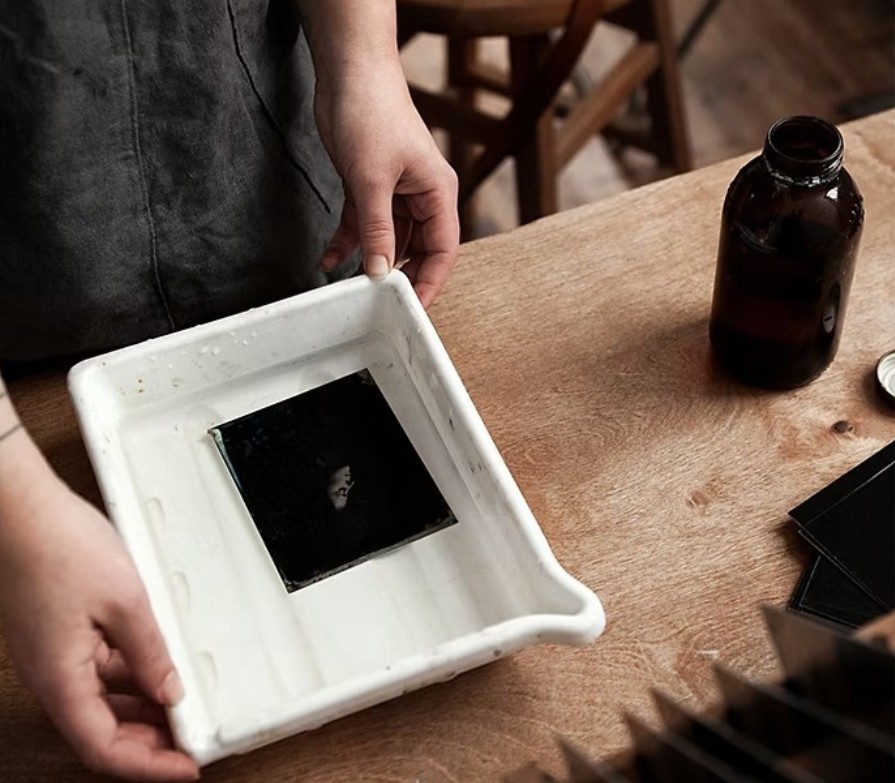
4.2. Tintype Photography
Once the plate is ready, it is placed in a large format camera. Because Tintypes are less sensitive to light, the photographer needs to adjust the exposure time to be longer than with digital photos. Natural light is often preferred to create photos with good depth and contrast.
Composition, subject matter, and lighting are key. A great Tintype photograph is not just about technique, but also about the ability to organize and tell a story through images.
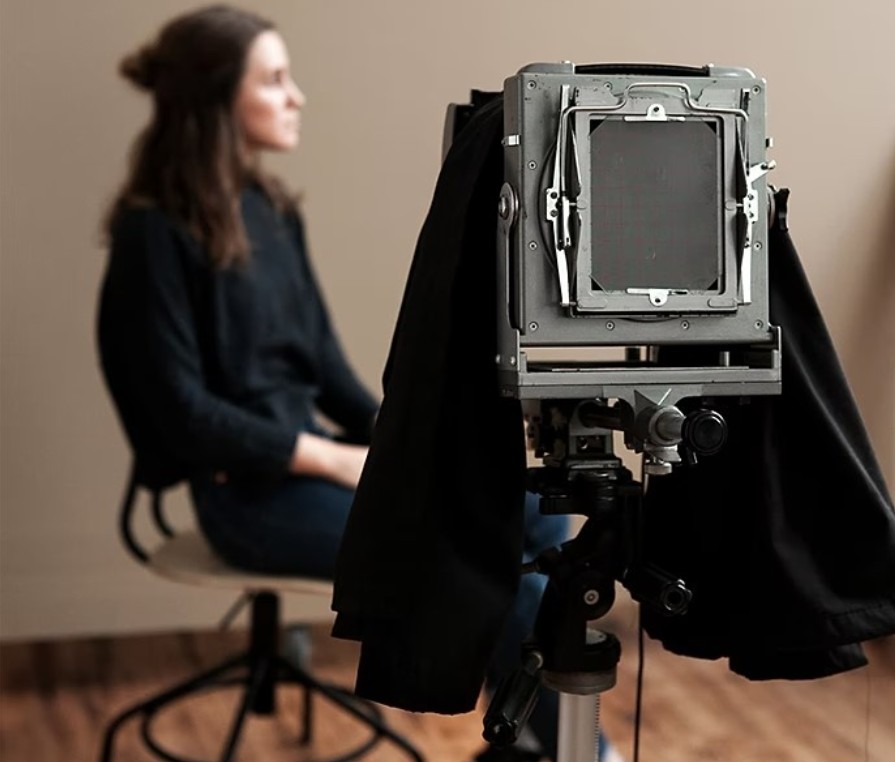
4.3. Image processing
After exposure, the photograph is returned to the darkroom for processing. The photographer pours developing solution onto the surface and waits for about 10–15 seconds for the image to develop. The photograph is then placed in fixative solution, which converts the image from negative to positive.
Once stabilized, the image is rinsed in water, dried, and coated with a protective varnish. The entire process takes about 15 minutes, but involves more than 30 detailed steps, each important and affecting the final result.
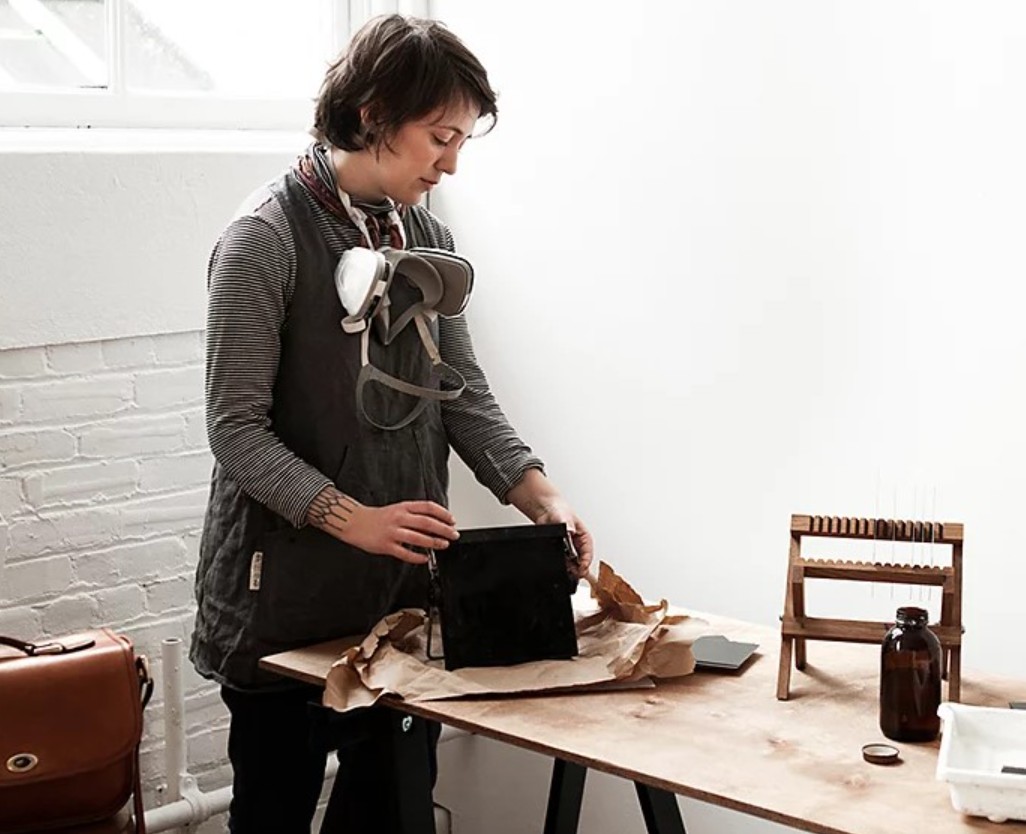
5. Convert Tintype photos to digital
Although Tintypes are a physical form of photograph, many people still want to preserve and share them in the digital age. The most common way to do this is to scan the image with a high-resolution scanner or take a photo with a digital camera.
However, the biggest challenge lies in accurately reproducing the details, tones and vintage effects of Tintype images. Software such as Adobe Photoshop is used to convert the images to grayscale, adjust the contrast and add filters to recreate the nostalgic feel. It is important to keep the natural look, without over-editing so as not to lose the unique identity of the Tintype.
The combination of classic techniques and modern technology has helped Tintype step out of the limits of a manual art, becoming a bridge between the past and the present. Whether you are a professional photographer or just a lover of nostalgia, Tintype still brings an unforgettable creative and aesthetic experience.
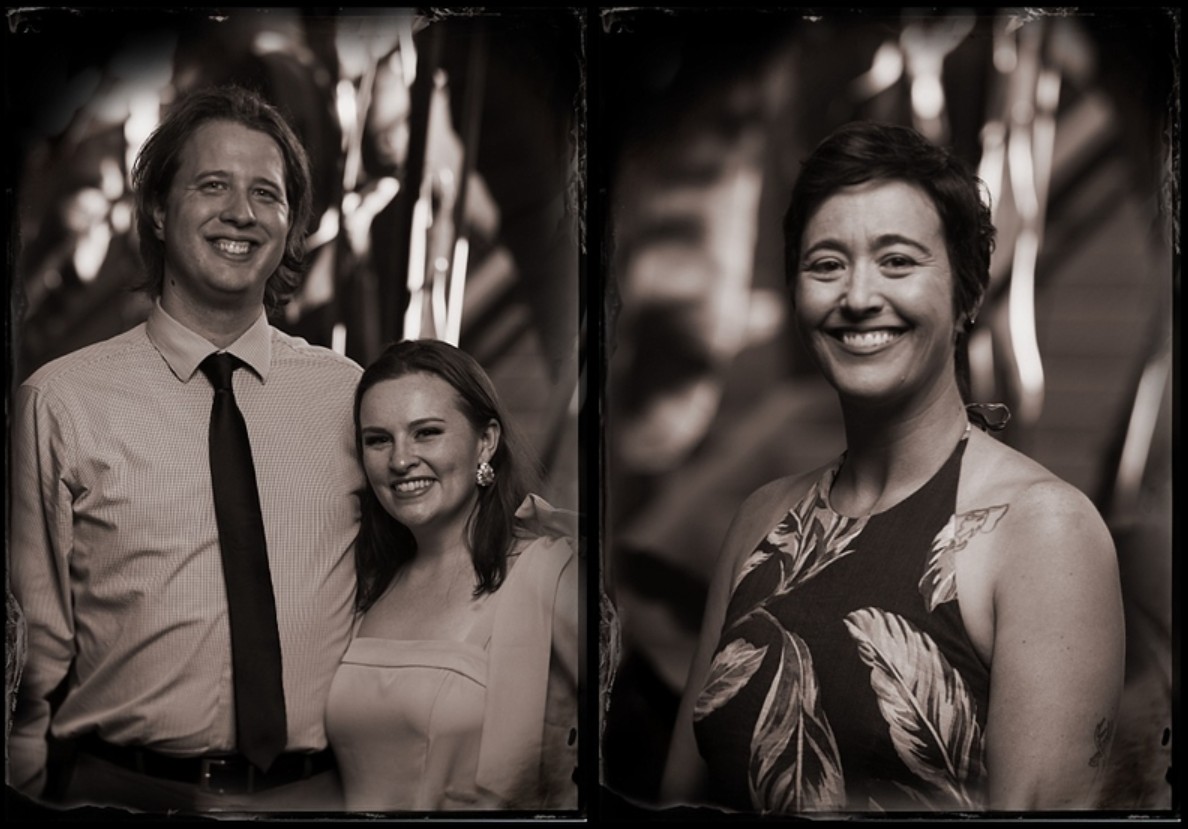
6. Conclusion
Tintypes are not only a classic photographic technique, but also a cultural icon, a testament to the intersection of art and history. From soldier portraits during the American Civil War to modern works of art, Tintypes have always been fascinating for their uniqueness and exquisite craftsmanship.
Creating a Tintype photo requires patience, meticulousness and a serious investment in equipment and time. But the results are works of timeless beauty, reminiscent of the past and evoking special emotions in the viewer.
In the digital age, Tintype has not only been revived but has also become a new creative trend where people find authenticity and nostalgia among the myriad of modern images. If you are looking for a different photographic experience, Tintype is definitely a door that opens to the world of sophistication and true art.



























